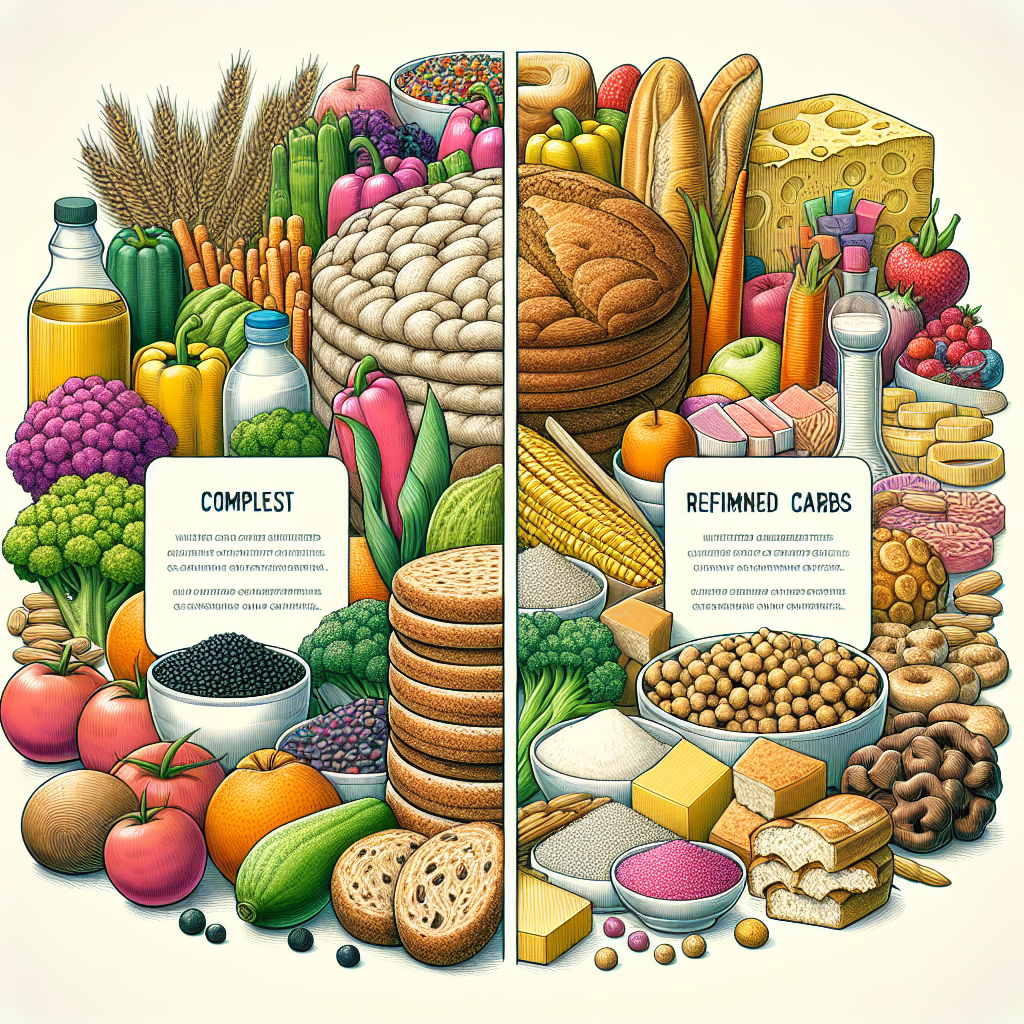When it comes to weight loss, one of the most critical aspects is diet planning. While exercise and lifestyle changes play a significant role, what you eat and how you manage your meals are at the heart of a successful weight loss journey. This comprehensive guide will outline a well-structured diet plan for weight loss that incorporates essential nutrients, emphasizes portion control, and ensures sustainable weight reduction.
Understanding the Basics of Weight Loss
Before diving into the diet plan, it’s crucial to understand how weight loss works. At its core, losing weight requires a calorie deficit—consuming fewer calories than your body uses daily. When you achieve this, your body begins to burn stored fat for energy. However, simply cutting calories without focusing on nutrient intake can lead to fatigue, nutrient deficiencies, and loss of muscle mass. Therefore, a balanced approach is vital for long-term success.

The Importance of Macronutrients in a Diet Plan
A balanced diet plan for weight loss must include the three primary macronutrients: proteins, fats, and carbohydrates. Here’s a breakdown of their importance:
1. Protein
Protein is essential for muscle repair and growth. It helps maintain muscle mass during weight loss, crucial for keeping your metabolism running efficiently. Additionally, protein has a high satiety factor, meaning it helps you feel full longer. Incorporate lean protein sources like chicken breast, turkey, eggs, tofu, and legumes into your diet.

2. Carbohydrates
Not all carbohydrates are created equal. While reducing your intake of refined carbs (such as white bread, pastries, and sugary snacks) is essential, complex carbohydrates are necessary for energy and should not be entirely avoided. Focus on whole grains, vegetables, and fruits for sustained energy levels without causing spikes in blood sugar.

3. Fats
While fats are often considered the enemy in many weight loss plans, the truth is that healthy fats are vital for overall health and well-being. Fats support brain function, hormone production, and cell health. Opt for unsaturated fats from sources like olive oil, avocado, nuts, and seeds while minimizing your intake of trans fats and saturated fats.

How to Structure Your Daily Meals for Weight Loss
A well-structured diet plan isn’t just about what you eat and when and how much you eat. Here’s how to break down your meals for optimal weight loss results:
1. Breakfast: Start Strong
Breakfast is often considered the most important meal of the day, and for good reason. Eating a healthy breakfast kickstarts your metabolism and provides energy for the day ahead. Choose high-protein and fiber-rich options such as oatmeal with chia seeds, Greek yogurt with berries, or eggs with whole-grain toast. Avoid sugary cereals and pastries.

2. Lunch: Balanced and Satisfying
Lunch should be balanced, combining protein, complex carbohydrates, and healthy fats. A typical weight loss lunch might include a grilled chicken salad with mixed greens, avocado, and a vinaigrette dressing. Alternatively, you can choose a quinoa bowl with roasted vegetables and lean protein.

3. Dinner: Light and Nutrient-Dense
For dinner, aim for lighter meals that are still rich in nutrients. Avoid heavy, carb-laden dinners that can slow digestion and disrupt sleep. A good option might be baked salmon with steamed broccoli and quinoa. If you’re craving something hearty, a vegetable stir-fry with tofu or chicken can be satisfying without being overly calorie-dense.

4. Snacks: Keep it Healthy
Snacking can either make or break your weight loss efforts. Instead of reaching for chips or cookies, choose healthy snacks like almonds, hummus with carrot sticks, or a piece of fruit. Keep portions small and ensure that your snacks mix protein, fiber, and healthy fats to keep you full between meals.

Portion Control: The Key to Managing Calorie Intake
No matter how healthy your food choices are, portion control is essential for maintaining a calorie deficit. Many people overeat without realizing it, so it’s crucial to become mindful of portion sizes. Here are a few tips for managing portions effectively:
- Use smaller plates to trick your brain into thinking you’re eating more.
- Measure your portions of high-calorie foods like nuts, oils, and grains.
- Eat slowly, giving your body time to signal when you’re full.
- Avoid eating straight from the package, as it’s easy to lose track of how much you’ve consumed.
Incorporating Exercise into Your Weight Loss Plan
While this article focuses primarily on diet, it’s important to note that exercise is complementary to weight loss. Strength training helps maintain muscle mass, while cardio exercises help burn calories and improve cardiovascular health. Aim for at least 150 minutes of moderate-intensity weekly exercise, such as brisk walking, swimming, or cycling, in addition to your dietary efforts.

Sample 7-Day Diet Plan for Weight Loss
Here is a sample 7-day weight loss meal plan that you can follow to kickstart your journey. Each day includes breakfast, lunch, dinner, and snacks, ensuring a balanced intake of macronutrients and essential vitamins and minerals.

Day 1
- Breakfast: Greek yogurt with mixed berries and chia seeds
- Lunch: Grilled chicken salad with mixed greens and avocado
- Dinner: Baked salmon with quinoa and steamed broccoli
- Snack: Apple slices with almond butter
Day 2
- Breakfast: Scrambled eggs with spinach and whole-grain toast
- Lunch: Quinoa bowl with roasted vegetables and chickpeas
- Dinner: Stir-fry with tofu, bell peppers, and brown rice
- Snack: Carrot sticks with hummus
Day 3
- Breakfast: Oatmeal with sliced banana and walnuts
- Lunch: Turkey wrap with whole-wheat tortilla, lettuce, and tomato
- Dinner: Grilled shrimp with asparagus and sweet potato
- Snack: Greek yogurt with a handful of almonds
Day 4
- Breakfast: Smoothie with spinach, protein powder, almond milk, and blueberries
- Lunch: Lentil soup with a side of mixed greens
- Dinner: Grilled chicken breast with roasted vegetables
- Snack: A handful of mixed nuts
Day 5
- Breakfast: Avocado toast with poached egg
- Lunch: Tuna salad with mixed greens and olive oil dressing
- Dinner: Grilled steak with cauliflower rice and sautéed spinach
- Snack: Celery sticks with peanut butter
Day 6
- Breakfast: Cottage cheese with pineapple and flaxseeds
- Lunch: Chicken Caesar salad with a light dressing
- Dinner: Baked cod with quinoa and green beans
- Snack: Sliced cucumber with hummus
Day 7
- Breakfast: Protein pancakes with a drizzle of honey and fresh fruit
- Lunch: Black bean salad with avocado, corn, and salsa
- Dinner: Turkey meatballs with zucchini noodles
- Snack: Dark chocolate square with a handful of berries
Hydration and Weight Loss: Why Drinking Water is Key
Staying hydrated is one of the most overlooked aspects of weight loss. Drinking water helps regulate your metabolism, supports digestion, and reduces hunger. Aim for at least 8 cups (64 ounces) of water daily, and more if you’re physically active. In addition, replacing sugary drinks like soda and juice with water can significantly reduce your daily calorie intake.

Conclusion: Stick to the Plan for Sustainable Results
Weight loss is not a quick fix—it requires consistency, patience, and discipline. By following a structured diet plan that includes a balance of macronutrients, portion control, and hydration, you can achieve your weight loss goals healthily and sustainably. Combine this with regular exercise, and you’ll shed pounds and improve your overall well-being.
FAQ: Diet Plan for Weight Loss
- What is the best diet plan for weight loss?
- The best diet plan for weight loss is balanced, sustainable, and tailored to your needs. It should include lean proteins, healthy fats, and complex carbohydrates while maintaining a calorie deficit.
- How many calories should I eat to lose weight?
- The number of calories you need to consume for weight loss depends on various factors such as your age, gender, activity level, and weight goals. Generally, reducing your daily intake by 500-1,000 calories can lead to a safe weight loss of about 1-2 pounds per week.
- Can I lose weight without exercising?
- Yes, weight loss is possible through diet alone, as it primarily depends on creating a calorie deficit. However, incorporating exercise can enhance results, improve overall health, and help maintain muscle mass during weight loss.
- What should I eat for breakfast to lose weight?
- A weight-loss-friendly breakfast should be high in protein and fiber to keep you full throughout the day. Examples include scrambled eggs with vegetables, Greek yogurt with berries, or oatmeal with nuts and seeds.
- How can I control cravings while on a diet?
- To control cravings, eat balanced meals with adequate protein, fiber, and healthy fats. Staying hydrated and getting enough sleep also helps reduce cravings. For occasional treats, practice portion control and mindfulness.
- Is it necessary to count calories on a weight-loss diet?
- While counting calories can be a helpful tool for maintaining a calorie deficit, it’s not strictly necessary. For a more intuitive approach to weight loss, focus on eating nutrient-dense, whole foods and controlling portion sizes.
- What foods should I avoid on a weight-loss diet?
- It’s best to avoid or limit foods high in added sugars, refined carbohydrates (such as white bread and pastries), and unhealthy fats (such as fried foods and processed snacks). These foods are high in calories but low in essential nutrients.
- How fast can I lose weight with a proper diet plan?
- Healthy weight loss is typically around 1-2 pounds per week. Rapid weight loss through extreme dieting is not sustainable and can lead to nutrient deficiencies or muscle loss.
- Can I still eat carbs and lose weight?
- Yes, you can eat carbohydrates and lose weight. The key is to choose complex carbohydrates like whole grains, vegetables, and legumes that provide long-lasting energy and fiber.
- How much water should I drink while on a diet?
- Aim for at least 8 cups (64 ounces) of water daily. Staying hydrated helps control hunger and supports metabolic processes.










